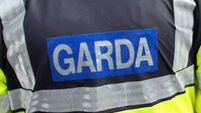Victim's email said 'say a prayer for me' day before death
The night before Siobhan Kearney was found dead in her home she emailed her brother’s partner in Italy ending her letter by asking her to, “say a prayer for me”, a court has heard.
Brian Kearney, 50, with an address at Carnroe, Knocknashee, Goatstown, Dublin, has pleaded not guilty to murdering his wife Siobhan, 38, on February 28, 2006 - his 49th birthday.
Today the Central Criminal Court at Dublin heard Ms Kearney emailed her brother Owen’s partner Alessandra Benedetti, who speaks Italian and German, to thank her for translating information for the hotel.
In the email, Ms Kearney said life was hectic with all the excitement of her baby nephew George who was just like a “little marshmellow”.
“My son is all action. I just can’t keep up with him he’s just mad out, wild, wild, wild, I don’t know what I’m going to do he loves Madonna and wants to listen to her CDs all day and then watch John Wayne movies,” Ms Kearney wrote.
“He’s football mad,” she wrote. “I’ve lost three pounds in the last week.”
“I hate the thought of when he’s due to go back to school,” she wrote, “say a prayer for me.”
In the email she said Ms Benedetti would know what it was like, having sons of her own and said she was excited about the couple coming to Ireland to visit in April.
She said she couldn’t wait to get her mitts on her nephews.
“I hope you’re moving into the new house soon, it will be just great for you and you so deserve it,” she wrote.
The email was read to the court and followed by evidence from Detective Garda Paul Johnstone, a computer forensic analyst, who analysed a laptop recovered from the house in Goatstown.
The same night the email was sent, websites for the Irish Law Society and the subject 'free legal aid' were accessed from the laptop along with a search of flights on Iberia Air.
Flights for two adults and one child flying from Dublin to Majorca on March 13 or 14, 2006 and returning to Dublin on March 27, 2006 were searched, Mr Johnstone told the court.
Earlier searches dating from February 13, 2006, included searches of three different property websites in Dublin.
Searches had also been carried out on overseas property for sale using Yahoo as the search engine.
Separation entitlements in Ireland, www.diylawyer.ie, Irish family law, Irish separation law, child custody and divorce had also been searched, Mr Johnstone said.
The court has previously heard Ms Kearney was applying for a separation.
Mr Justice Barry White and the jury of eight women and four men also heard evidence from forensic scientists from Garda National Headquarters today, a DNA specialist, telling Mr Justice White "I didn’t find any evidence of Brian Kearney’s DNA on the flex of the hoover".
Dr Dorothy Ramsbottom examined samples taken from the purple flex of the Dyson hoover that was found with Ms Kearney’s body.
Dr Ramsbottom said initial swabs showed a major female component and a minor male component from the cord.
The female DNA matched Ms Kearney with a 1 in 1000 million chance it could be from someone else while the male component matched Brian Kearney with a 1 in 18 chance it came from someone else.
Dr Ramsbottom told Mr Denis Vaughan Buckley SC she then used a technique new to the lab that was more sensitive to detecting DNA.
Using this technique, Ms Kearney’s DNA was still the major component while the male component could not be determined.
She had tested two knotted areas in the cord, the court heard.
“Is it possible for a person to touch an item and not leave DNA?” Mr Buckley asked.
“It is,” Dr Ramsbottom replied.
The court heard, as part of the investigation, Action Security Systems were called in to analyse the security alarm at the Goatstown home.
Service manager Colm Fitzgerald told the court the time was out by one hour on the alarm system. The final time it was turned off was 7.37am on the day Ms Kearney’s body was found.
The alarm system had settings that meant it could be set to sensor interference with doors or windows leading outside known as the “home” setting where people could still move about inside or it could be fully set.
At 22.50pm, the night before Ms Kearney’s body was found, it was set to the “home” function.
Detective Garda John Moran told the court there was no sign of forced entry at the home.
The court also heard from Garda Declan O’Connor who searched the home on March 8, 2006 and found a printout for an Aer Lingus booking made in December 2005.
The booking was found in a small bedroom wardrobe and was for one adult and one child flying from Majorca to Dublin on June 8, 2006 and returning from Dublin to Majorca on September 5, 2006.
No evidence was given of who booked the ticket or what names were given.
Mr Patrick Gageby SC for Kearney asked Mr O’Connor if the ticket had been booked in December 2005, which he confirmed.
The trial in courtroom three will not sit on Thursday because a juror’s grandmother has died, the court heard, and her funeral is being held.
Thursday is also Kearney’s 51st birthday and the two-year anniversary of Siobhan Kearney’s death.












